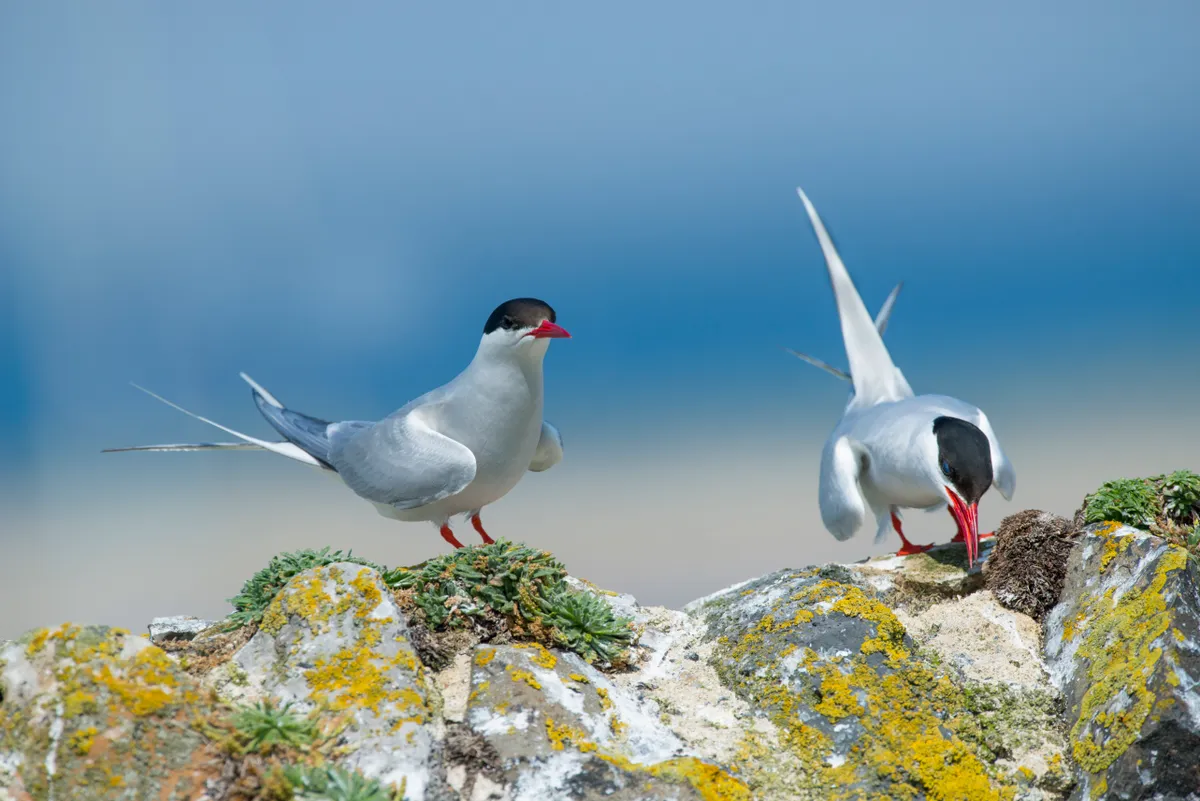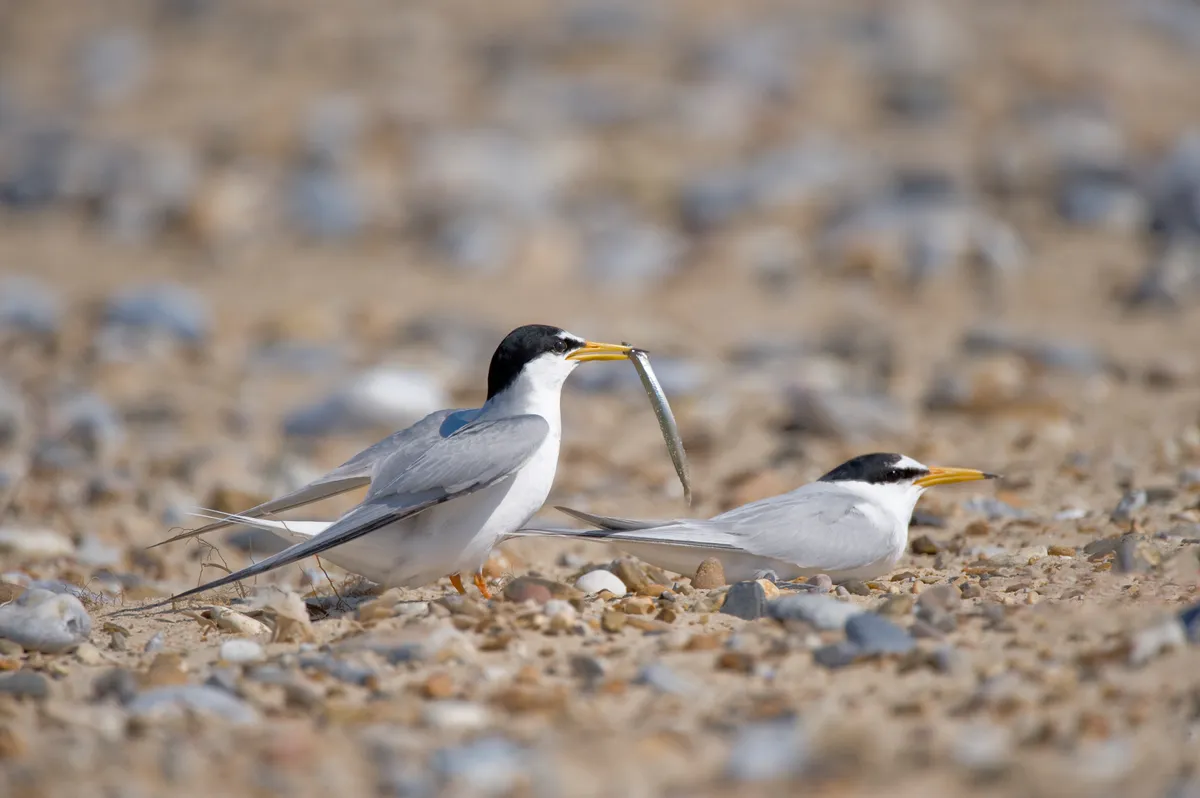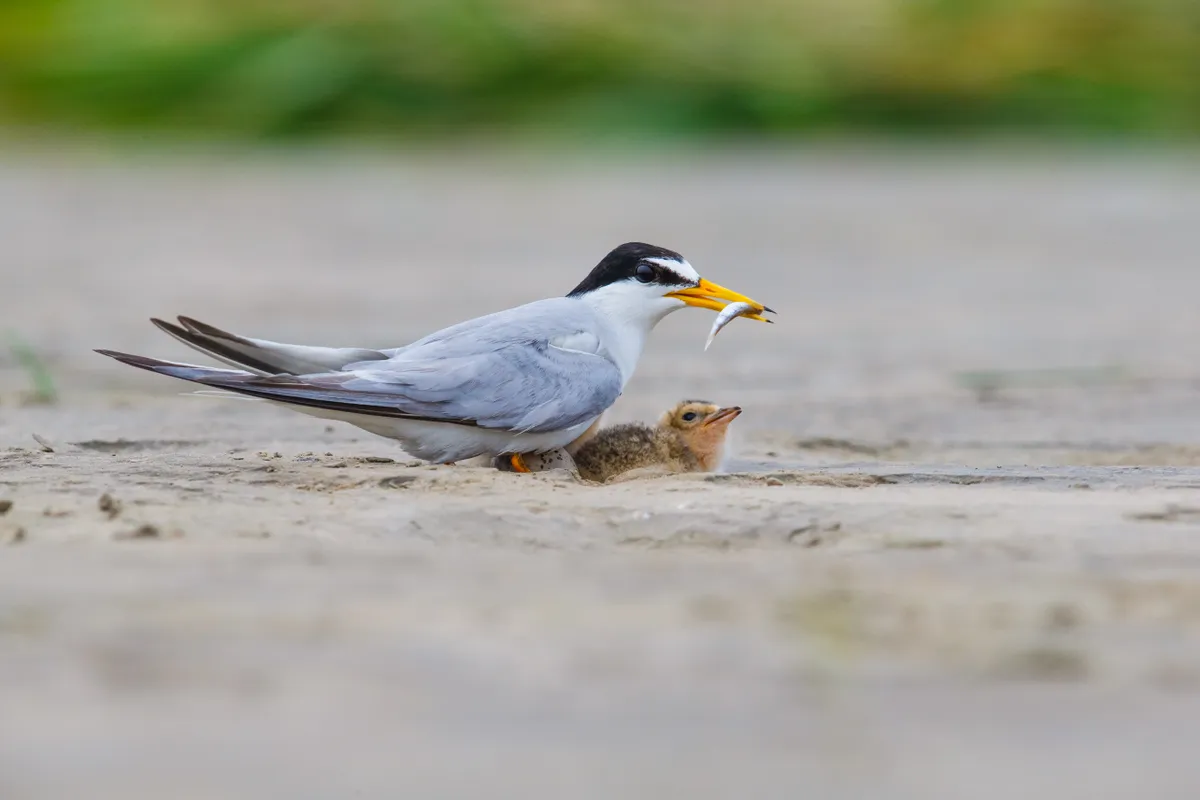This delicate bird certainly lives up to its name – little tern (Sternula albifrons) – as the smallest of our terns. Unfortunately, few people ever see it because of its rarity, but it’s a real character, often hovering over shallow coastal lagoons in very close proximity to people.
It is a rare seabird in the UK, with 1,500 breeding pairs, and can be seen from April to August.
In this guide we take a closer look at the little tern, including what they look like, migration patterns, habitat and distribution.
Interested in learning more about Britain’s seabirds? Check out our guides to puffins, gannets and auks.
Terns of Britain
Arctic terns, common terns and little terns grace Britain’s shores in the summers months. Learn how to identify them – and other tern species – with BBC Countryfile Magazine’s guide to terns.

Little tern identification
The little tern honestly looks more like a butterfly than a bird, with a similar rate of wingbeat, and a diminutive frame.
It is usually very easily identified simply by size, but its other feature is the brilliant white patch on the forehead (the 'albifrons') and, if you get close enough, you will see that it has a yellow bill with a narrow black tip (the reverse pattern to a sandwich tern).
It also has a very odd call, which is very difficult to describe, perhaps like a sandwich tern calling while holding its nose.
Watching terns hover is one of the delights of birdwatching, but for the birds themselves it is prodigiously hard work. One study found that an adult little tern, when feeding its young, would make as many as 100 plunge-dives in an hour, and visit its young in the nest 63 times in the course of a single day. And this can go on for days – little tern chicks leave the nest after almost three weeks of pampering.

Little tern breeding and nesting
Unfortunately for them, little terns usually nest on shingle beaches and, to make matters worse, do this in the summer months when human beings flock to the seaside. Not surprisingly, this puts them under enormous pressure, with unthinking beachgoers and irresponsible dog owners a constant threat.

Fortunately, unlike the roseate tern, the little tern is fairly common over a wide range, and often breeds along inland rivers in Eurasia.
Our birds migrate to tropical Africa for the winter.
Seabirds of Britain
Discover some of the UK’s most common types of seabird, where they live and the best places to see them with BBC Countryfile Magazine‘s guide to seabirds.


